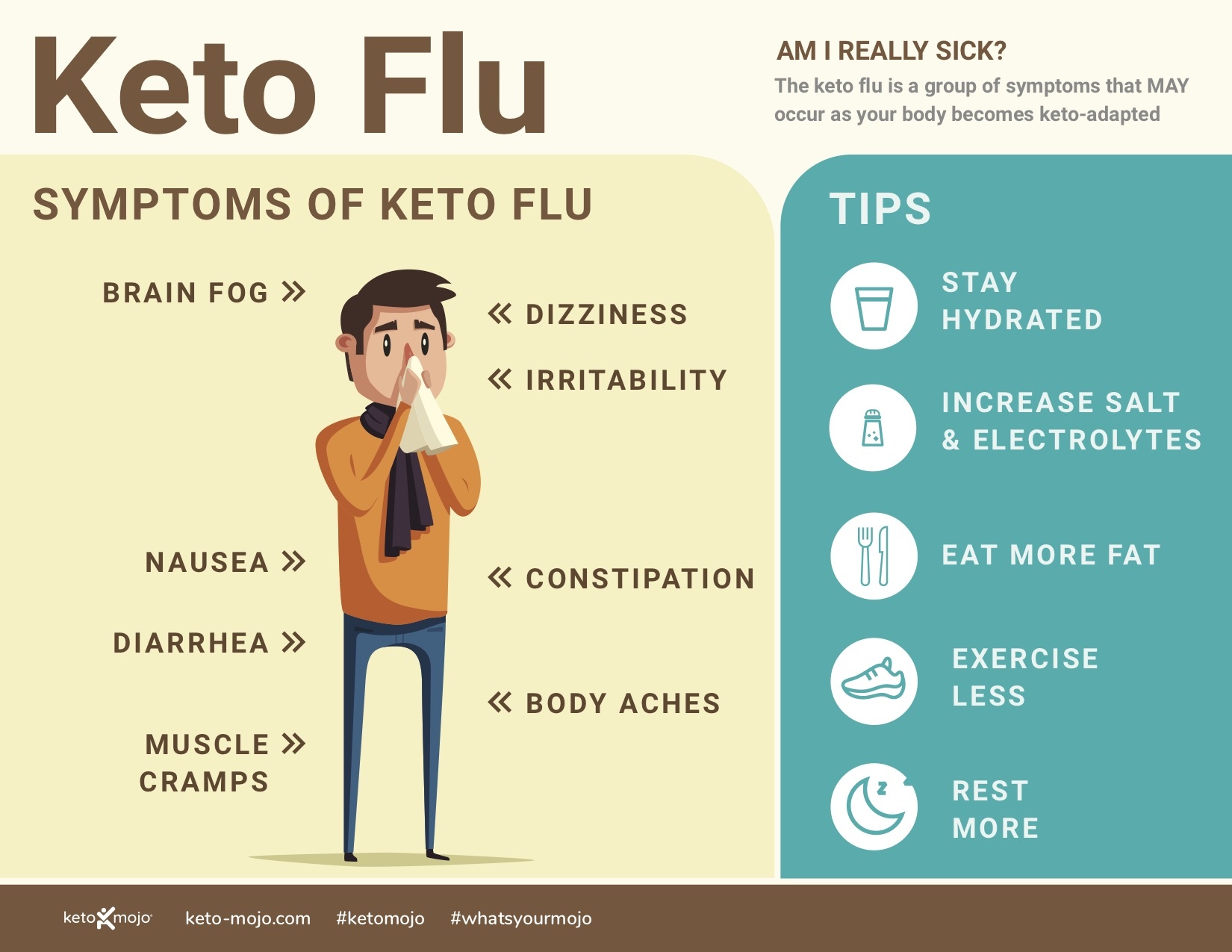UPDATED BY FRANZISKA SPRITZLER, RD, CDCES
During the first week or two of a ketogenic diet, you might not feel your best. Fatigue, brain fog, headache, and irritability are a few of the symptoms you may experience. But remember that this adjustment period is temporary and signals that the diet is taking effect. In fact, the symptoms many people have during this time are so common that they’ve earned a nickname: keto flu.
“Keto flu” is a common term used to describe the temporary side effects that some people experience when starting a ketogenic diet. These symptoms can occur as your body adapts to a lower carbohydrate intake and begins using fat and ketones as its main fuel. While the transition may be uncomfortable for a few days, it’s usually short-lived – and a sign that your metabolism is beginning to change.
The good news is that you don’t have to just tough it out. With a few simple strategies, many of these symptoms can be eased or even avoided altogether.
So, if you’re starting keto for weight loss or health benefits, there’s no need to suffer in silence. Read on to learn about the most common symptoms and how to manage them. And if you feel fine, that’s great! Keto flu is common, but not everyone experiences it.

Keto Flu Symptoms
Adjusting to a ketogenic lifestyle isn’t just a mental shift; it’s a physical one, too. If your usual diet has been high in carbohydrates (as is the case for most people), your body now must adapt to using fat and ketones for energy instead of relying on glucose from carbs.
As this metabolic transition takes place, you may notice a few temporary symptoms, which are signs that your body is recalibrating. These “keto flu” symptoms can vary from person to person.
Here are some of the most common ones:
- Brain fog
- Fatigue or drowsiness
- Muscle aches or soreness
- Cramps
- Dizziness
- Nausea
- Constipation or diarrhea
- Irritability
Keto Flu Timing and Duration: How Long Does Keto Flu Last?
For many people, keto flu symptoms can begin within the first day or two of significantly lowering carbohydrate intake, especially if your usual diet has included a lot of refined sugars and processed foods. On the other hand, if you’ve already been eating fewer carbs and limiting added sugars, you may have only mild symptoms or none at all.
Although keto flu symptoms can be uncomfortable, they typically last less than a week. In rare cases, they may persist a bit longer – sometimes up to a month – but this isn’t common.
If your symptoms are especially intense or don’t start to improve after several days, it’s a good idea to check in with your healthcare provider to rule out other causes and make sure your transition to keto is as smooth and safe as possible.
Ways to Ward Off the Keto Flu
Fortunately, there are several simple strategies that can help ease keto flu symptoms as your body adapts to burning fat for fuel:
Stay well hydrated: The ketogenic diet is known for having a natural diuretic effect. The resulting dehydration can contribute to symptoms like fatigue, headaches, and dizziness. Be sure to drink enough water consistently throughout the day to replenish what you’ve lost. Check the color of your urine – it should be clear to pale yellow.
Replenish electrolytes: Low sodium, magnesium, and potassium levels are a common cause of keto flu symptoms. Although the exact mechanism isn’t fully understood, researchers believe that when insulin levels are low, the kidneys retain less sodium and excrete more into the urine. Because sodium plays a key role in maintaining electrolyte balance, losing too much can also affect the levels of other important electrolytes like magnesium and potassium. Adding mineral-rich foods such as avocados, keto-friendly vegetables, and bone broth or bouillon can help. You might also try lightly salting your meals or beverages with unrefined salt to boost your sodium intake.
Eat enough fat: If you’re not consuming enough fat during this transition, your energy levels may suffer. Be sure your meals include healthy fats like olive oil, butter, coconut oil, fatty fish, nuts, and seeds.
Take it easy with exercise: Gentle movement like walking or stretching can be beneficial, but it’s best to avoid intense workouts during the first few days of keto adaptation. Give your body time to adjust.
Get plenty of rest: Your body is working hard to shift its metabolic fuel source. Prioritizing sleep and taking time to rest when needed can support this transition and help minimize symptoms.
Mojo On!
Not feeling better just yet? That’s okay. Your body is still adjusting. Any significant dietary change takes time, and shifting into a state of ketosis is no exception. In the meantime, continue to hydrate, consume mineral-rich food, add salt to your water if needed, and remind yourself that taking care of your health is a worthwhile investment.
As your body adapts, you may start to notice improvements in blood sugar, insulin levels, and overall energy. And by maintaining adequate hydration and electrolyte intake, you can help support a smoother transition. As always, it’s important to check with your healthcare provider before making significant changes to your diet, especially if you have a medical condition or take prescription medications.



